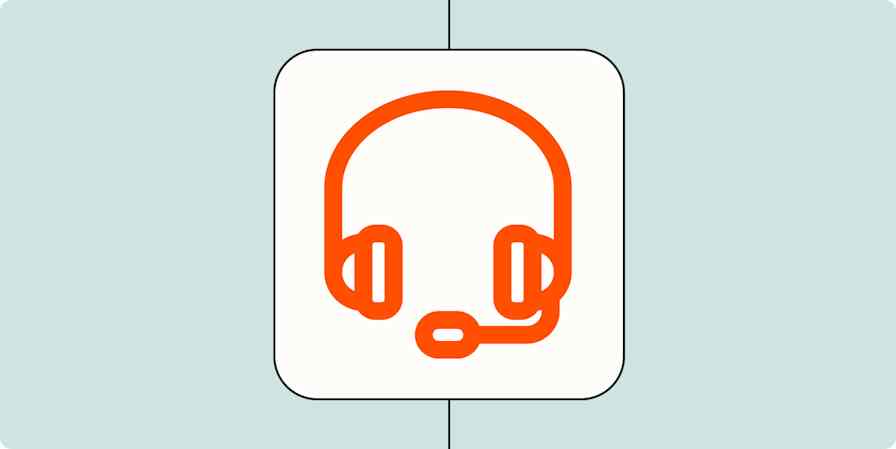Korey Marciniak and his team felt like they were "constantly running from fire to fire."
As Senior Manager of Customer Support Strategy and Operations, Korey wasn't surprised. Tool sprawl, endless notifications, and frustrated requests from customers are par for the course in SupportOps. But for a large company like Okta, Inc., they needed a more efficient system.
Korey wanted to tame the chaos with more streamlined workflows. Although Okta already used Zapier, multiple accounts existed without a standardized process in place.
Getting the four teams and various individuals using Zapier on the same account would be a solution for all—especially Korey's team.
About Okta:
Company size: 5,000+
Industry: SaaS
Location: San Francisco, California
Problem: Scattered solutions slowing down teams
Before implementing Zapier at scale, some teams relied on Zapier and others used in-house tools or IT.
SupportOps had to turn to developers, but their needs frequently outpaced developer bandwidth. "Support needs can't be resolved in a year-long project," said Korey. They needed help within a month, not months. "If a project takes a couple of sprints, you miss your window."
Okta needed a centralized, scalable, and flexible automation solution—one that the SupportOps team could own without heavy reliance on engineering. And they needed it quickly. Korey had identified multiple processes that were being bogged down by manual work.
Seeing an opportunity to unify workflow creation, Korey and Okta went all-in on Zapier. The first step? Bringing everyone onto the same Zapier Enterprise plan.
Solution: Scaling Zapier at Okta
With Zapier Enterprise, Okta's automation efforts were rolled into a single, Ops-owned Zapier instance. This meant Korey and his team could now scale the use of automation to make their work even more efficient.
"Zapier makes it to where I can just go in and change one small thing when something changes versus opening a ticket and waiting for engineering support. "
Credential rotations in hours, not days
As a security-first company, Okta frequently manages credential updates to ensure appropriate access across accounts. By streamlining internal processes and reducing manual coordination, the team has significantly improved efficiency while maintaining strict security standards.
Previously, credential rotations required multiple team members to coordinate authentication and verification, turning each update into a day-long process. Now, with optimized workflows in place, Korey can complete updates for all accounts in just two hours—freeing up time for higher-value security initiatives.
"We do regular reviews," says Korey. "It's an ongoing maintenance that happens with every single account that we use with Zapier. We're sending a Slack message as a certain user, or looking something up as a service account. Now we can test, we can connect, we can change passwords without me having to involve anyone else."
An escalation bot
One of Korey's most impactful Zaps is an escalation bot for customer support managers (CSMs).
Previously, escalating a case required logging into Salesforce, filling out forms, and navigating multiple steps that varied depending on the type of customer. "From firsthand experience," said Korey, "I know CSMs are getting frantic requests from customers while managing a lot of other things. They needed something simpler."
That's where a Slack bot comes in handy. Here's how his works:
A CSM sends a case number into a Slack channel, the tool the team spends the most time in.
From there, the automated workflow takes over. It checks multiple Salesforce instances to find the corresponding case and verifies its escalation status.
If the case hasn't been escalated yet, the bot escalates it within Salesforce—all while following Okta's policies about who can escalate a case and how, and what info is needed to move forward.
If the case has already been escalated, the bot will return a message in Slack sharing the details of what happened and why.
This automation ensures:
Speed: Escalations happen in real time to give customers support faster.
Accuracy: Cases follow the proper process every time, making the support team's life easier.
Adoption: Since CSMs already spend most of their time in Slack, they actually use it.
Every ticket escalated through the bot saves up to 10 minutes since CSMs can complete the process in seconds now. This change was so impactful that 13% of all escalations on Okta Workforce Identity now happen through it—and that number continues to grow.
"It tells me there are more opportunities for us to make an impact—where it improves the quality of life for other teams while ensuring escalations are done right," Korey said.
Targeted notifications
Support teams were getting buried in too many email notifications, making it common to miss critical updates. "When the wrong team gets the notification, eventually they stop paying attention," said Korey. To solve this, his team built targeted Slack notifications using Zapier.
For example, teams would want to keep an eye on a certain group of customers or certain cases. So Korey set up a notification process that sends targeted Slack updates to a specific channel to keep those folks informed.
This process helps:
Filter out noise: It only sends alerts when specific, high-priority conditions are met (like a specific case number).
Route messages to the right people: It notifies the correct team based on region, product, or priority.
Provide all necessary context: Teams automatically receive direct links and case details so they're fully informed.
"This is really easy to accomplish with Zapier because you can set up the criteria once and then continue to leverage it in the future," said Korey.
Results: A more peaceful work environment for SupportOps
By centralizing automation in Zapier, Okta's support team has significantly improved efficiency without adding complexity. "Zapier improves the quality of life for our teams," said Korey. "Zapier lets us spin up and test automations in hours, not full engineering sprints."
What started as a way to bridge resource gaps has now become a core strategy for Okta's support operations.
"The most important thing to my team is that we can do a lot of advanced things with Zapier and it's very easy to accomplish," said Korey. "I can get someone who's only been here for a few weeks to set up an automation in Zapier, that's huge. I don't need a highly technical team—I just need the right tools."










